The North Luangwa National Park is an area of pristine wilderness, home to Zambia’s only black rhino, an elephant stronghold and high lion densities. Sarah Kingdom visited the Mwaleshi and Takwela camps to explore the park on foot…
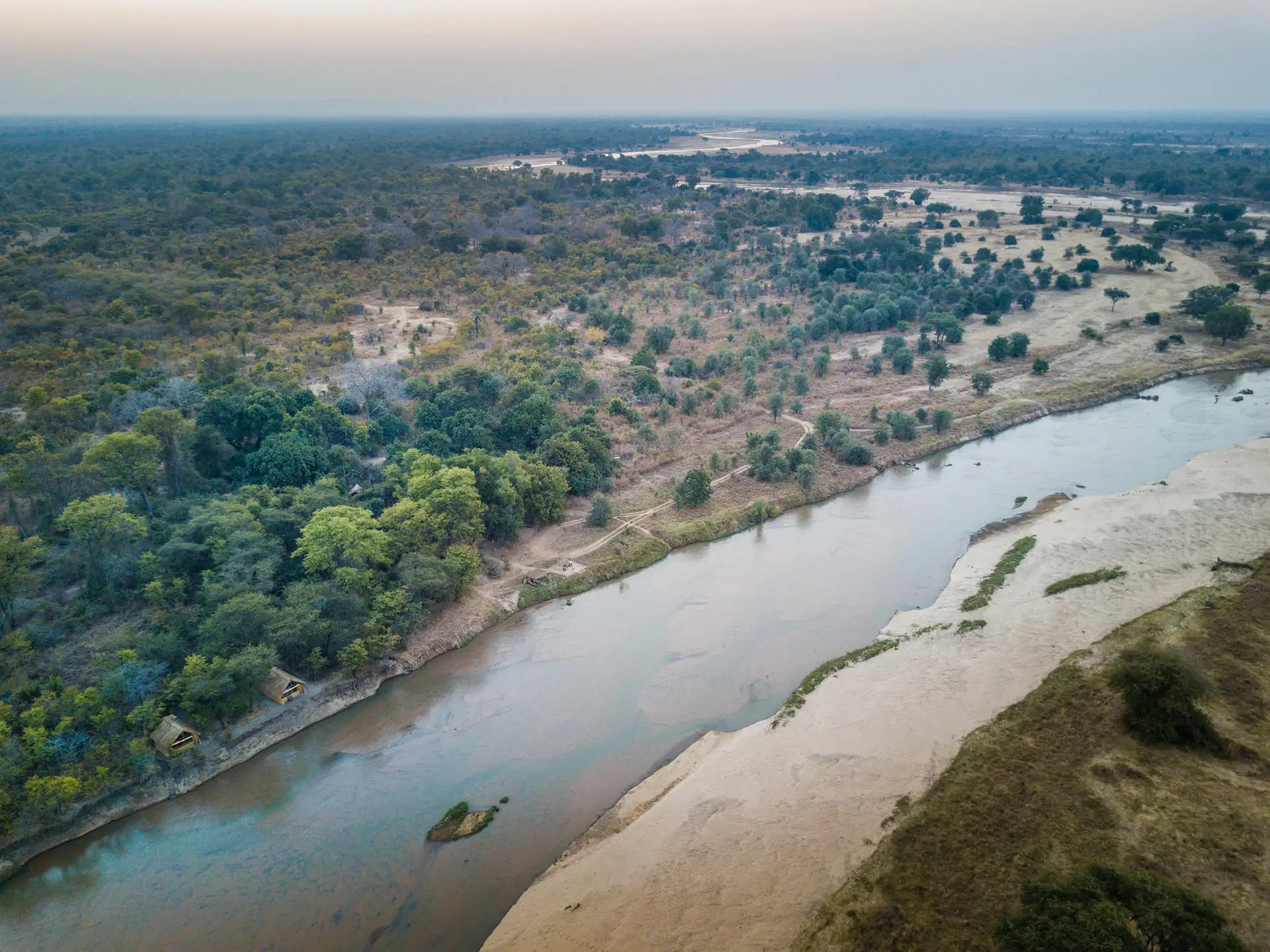
North Luangwa National Park is in Zambia, the northernmost park in the valley of the Luangwa River. Mwaleshi Camp is a 45-minute flight from Mfuwe Airport. The park is approximately 770km from Lusaka.
Know before you go
Africa’s Great Rift Valley extends down into north-eastern Zambia, and it is here where the Luangwa River has carved a uniquely beautiful landscape. Remote and wild, it is only accessible by flight or with good bush-driving skills. Walking in North Luangwa National Park is the ultimate way to explore the park – totally isolated, it’s an intimate, personal experience. There are few roads and even fewer people; you are unlikely to see anyone else for the duration of your safari.
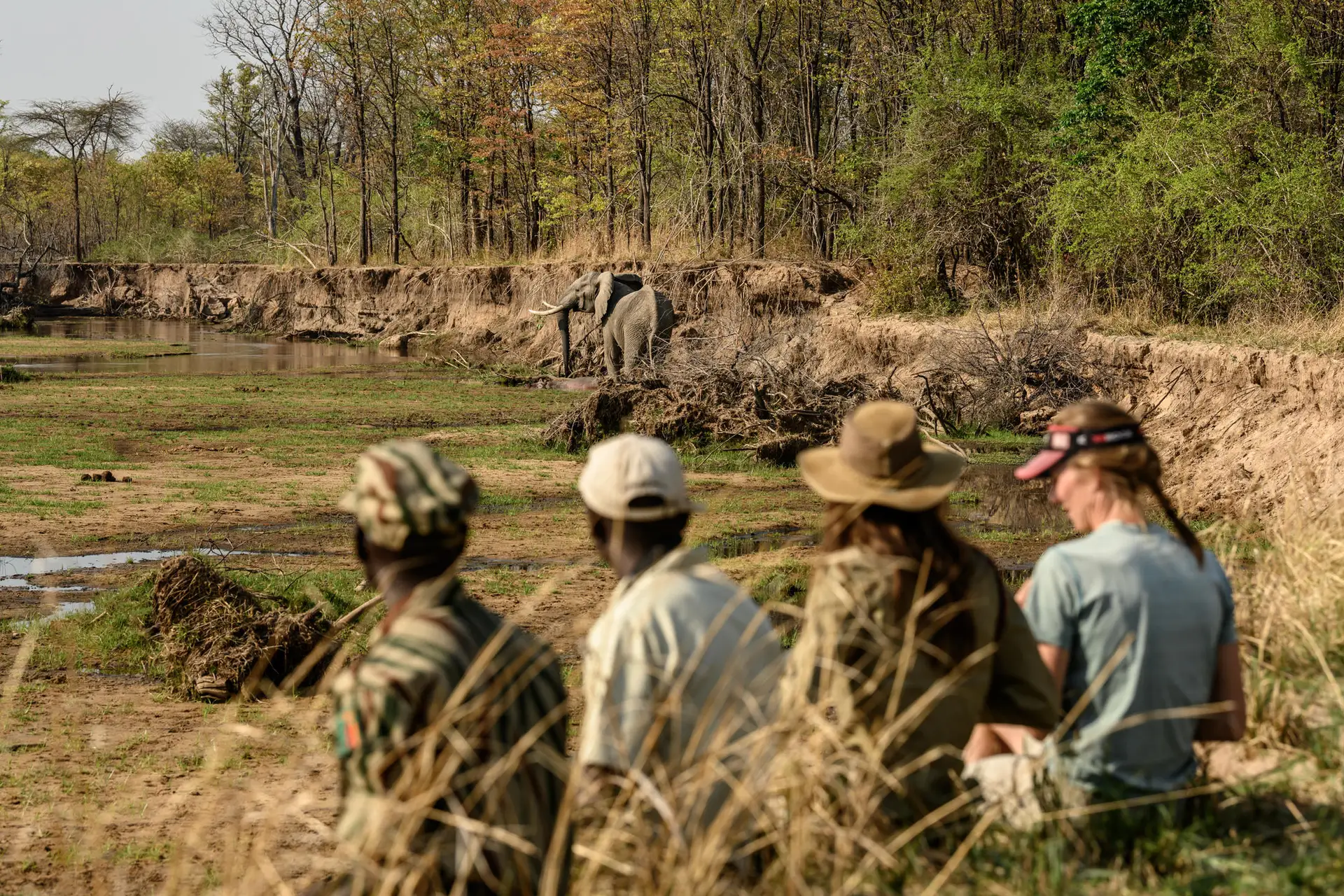
Good to know
North Luangwa is only open in the dry season, from June to October, and camps are rebuilt every year to have minimal impact on the ecosystem. Access to the park in the wet season is virtually impossible.
We stayed at Mwaleshi and Takwela camps in North Luangwa, which are owned and operated by Remote Africa Safaris. Chalets are simple yet comfortable, rebuilt annually from natural materials. These semi-permanent structures have comfortable beds and offer en-suite bathrooms under the stars.
Walking out from Mwaleshi Camp, we were given some final instructions – single file, no loud noise, no bright clothing. We were asked to stay behind the guide, pay attention and not wander off. We walked through long grass, crossed rivers, ducked under branches and stopped occasionally to untangle ourselves from thorn bushes. The bush is different when experienced on foot. You’re aware of every noise and rustle and every twig cracking underfoot. The distant roar of a lion or the not-so-distant trumpet of an elephant makes you aware of your surroundings, and your mortality.
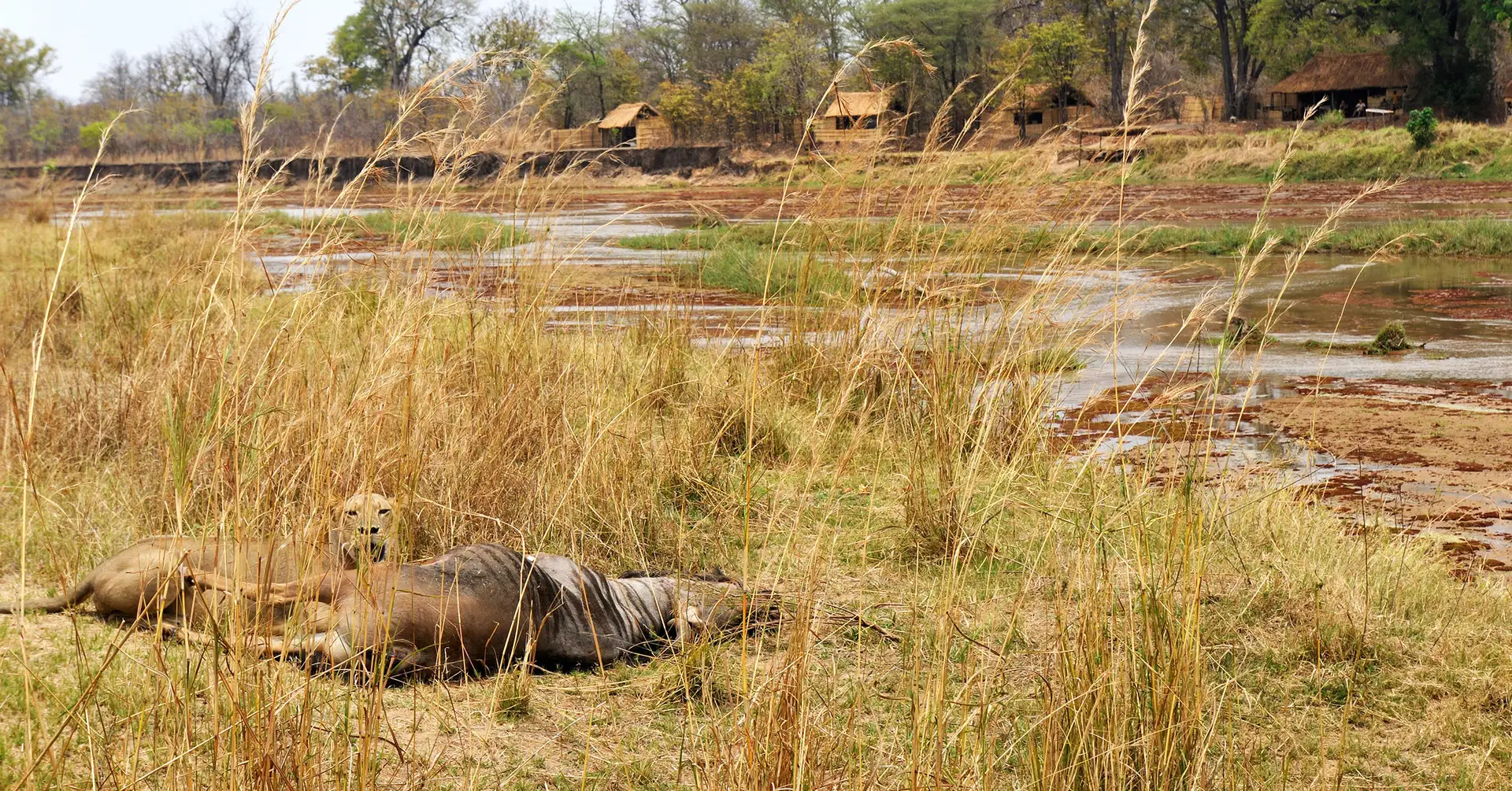
Our first-afternoon walk lasted three hours. We saw things normally missed from the back of a safari vehicle, like flight displays of lilac-breasted rollers, insect-catching antics of bee-eaters, ungainly flight patterns of hornbills, as well as a close-up look at various nest styles of some of the 12 different weaver species found in North Luangwa. The river turned orange and scarlet at sunset as we walked along the riverbank. The smell of the potato bush hung in the air, as did the trademark popcorn smell of a genet cat’s scent markings.
Back in camp that night we ate dinner by lantern light, overlooking the darkened river, while the noises of the bush carried on around us. We could hear lions roaring and the occasional trumpet of a young elephant across the water.
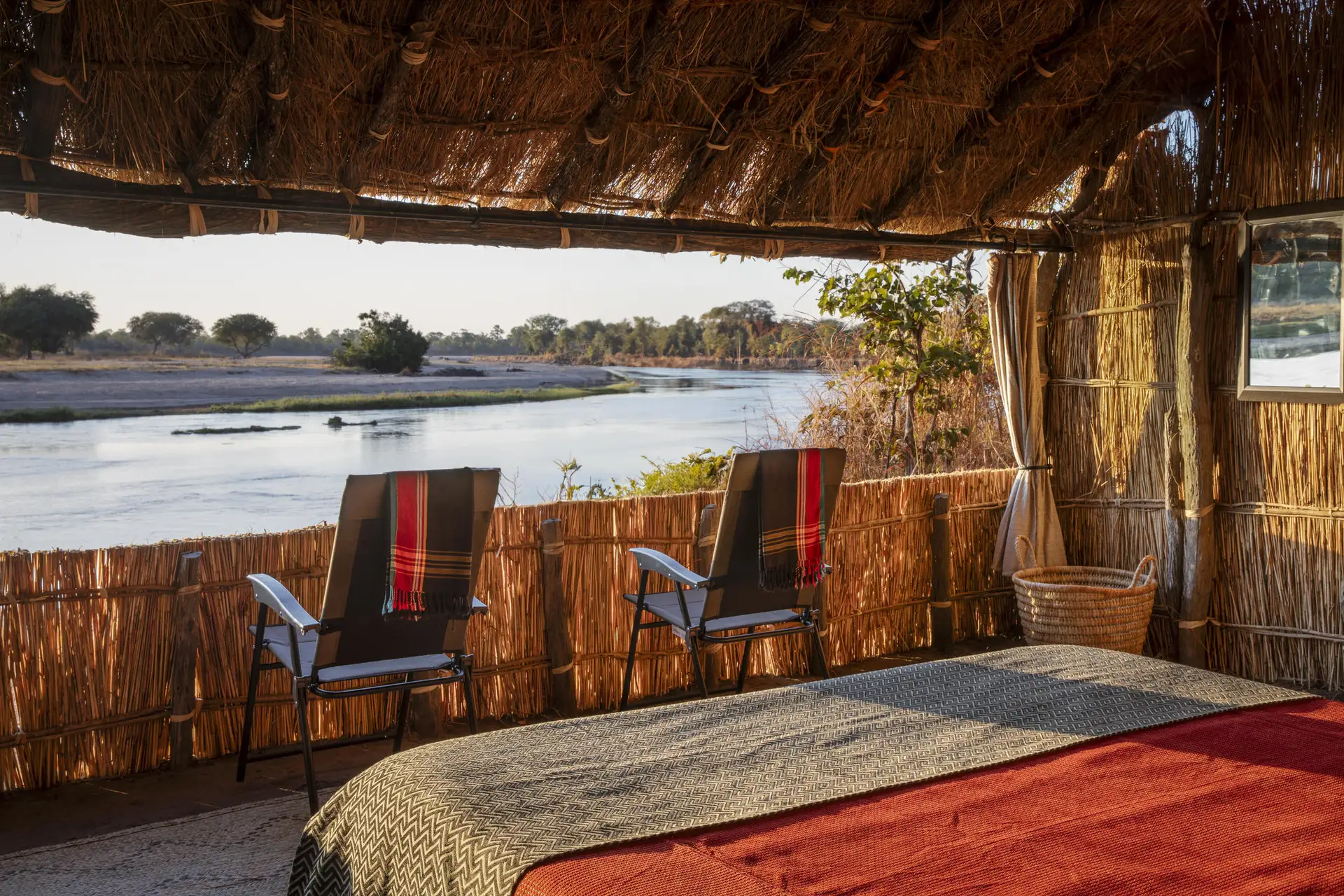
A typical day’s walking safari in North Luangwa starts at about 5am. After coffee and breakfast around the campfire on the riverbank, we set off for what would be a five-hour walk. Taking off our shoes, we crossed the shallow Mwaleshi River. We walked on through sand, over river pebbles, past woodland and grassland, watching as the world woke up around us. The occasional nocturnal creature rustled in the undergrowth, while birds and other daytime creatures started to wake up.
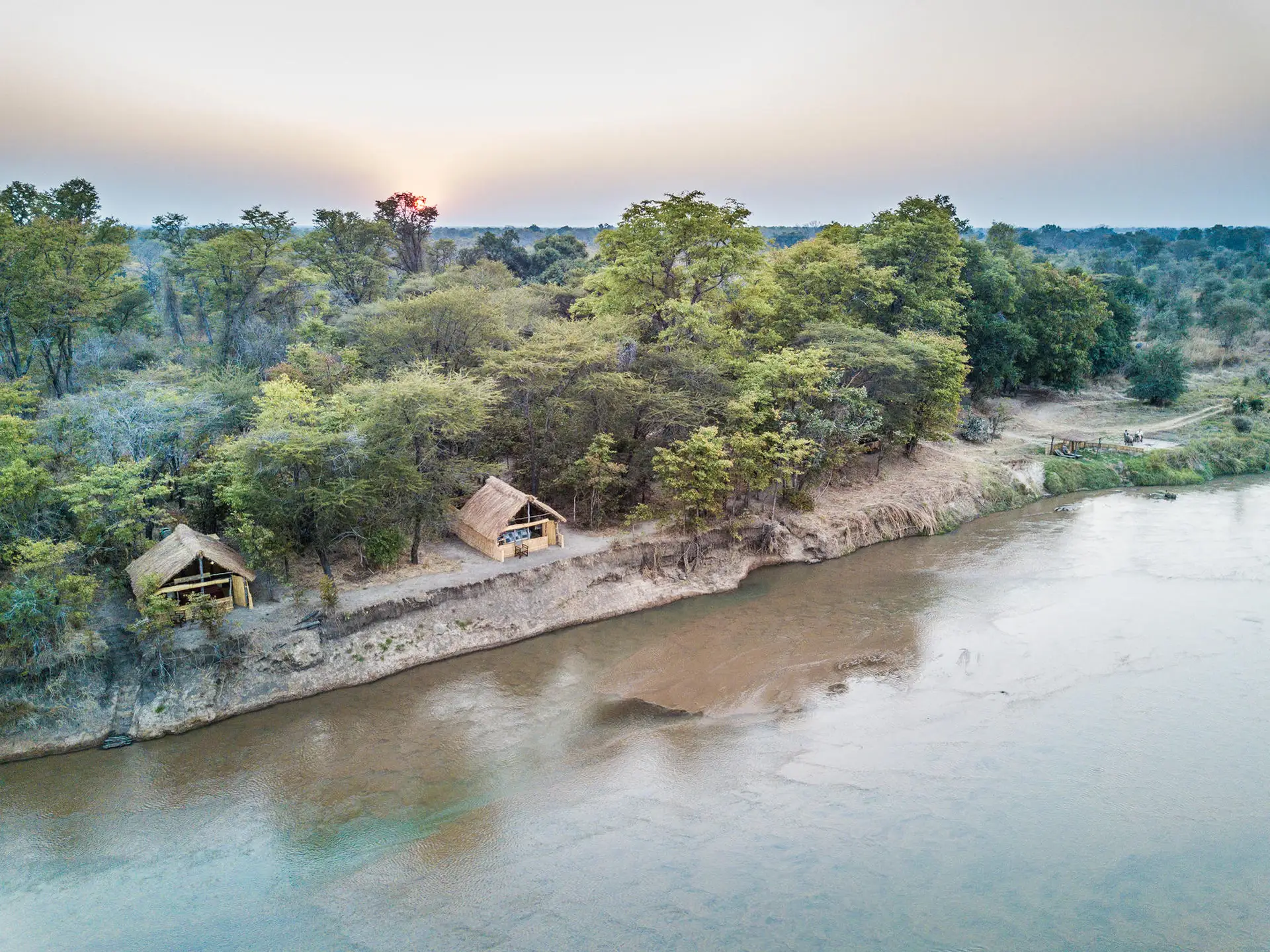
A couple of Cookson’s wildebeest crossed our path and then a lone bull elephant, walking along the top of the riverbank. He’d found a tree laden with fruit and paused for a leisurely meal. Continuing our walk, Ilala palms marked the ancient trails taken by elephants that had eaten the ginger-chocolate-tasting palm fruit and deposited the seeds as they walked.
Takwela Camp is a three-hour walk (or one-hour drive) downstream from Mwaleshi, in the game management area opposite the national park, at the confluence of the Mwaleshi and Luangwa rivers. A pod of 40 or 50 hippos stretched across the river, grunting and squabbling, or just resting their chins on a sandbank in the shallow water.
The camp is surrounded by groves of African ebony, mahogany, winter thorns and sausage trees, with the occasional Ilala palm. Perched 3 metres above the river, it offers the perfect vantage point to watch fish eagles hunting and white fronted and little bee-eaters swooping out over the water.
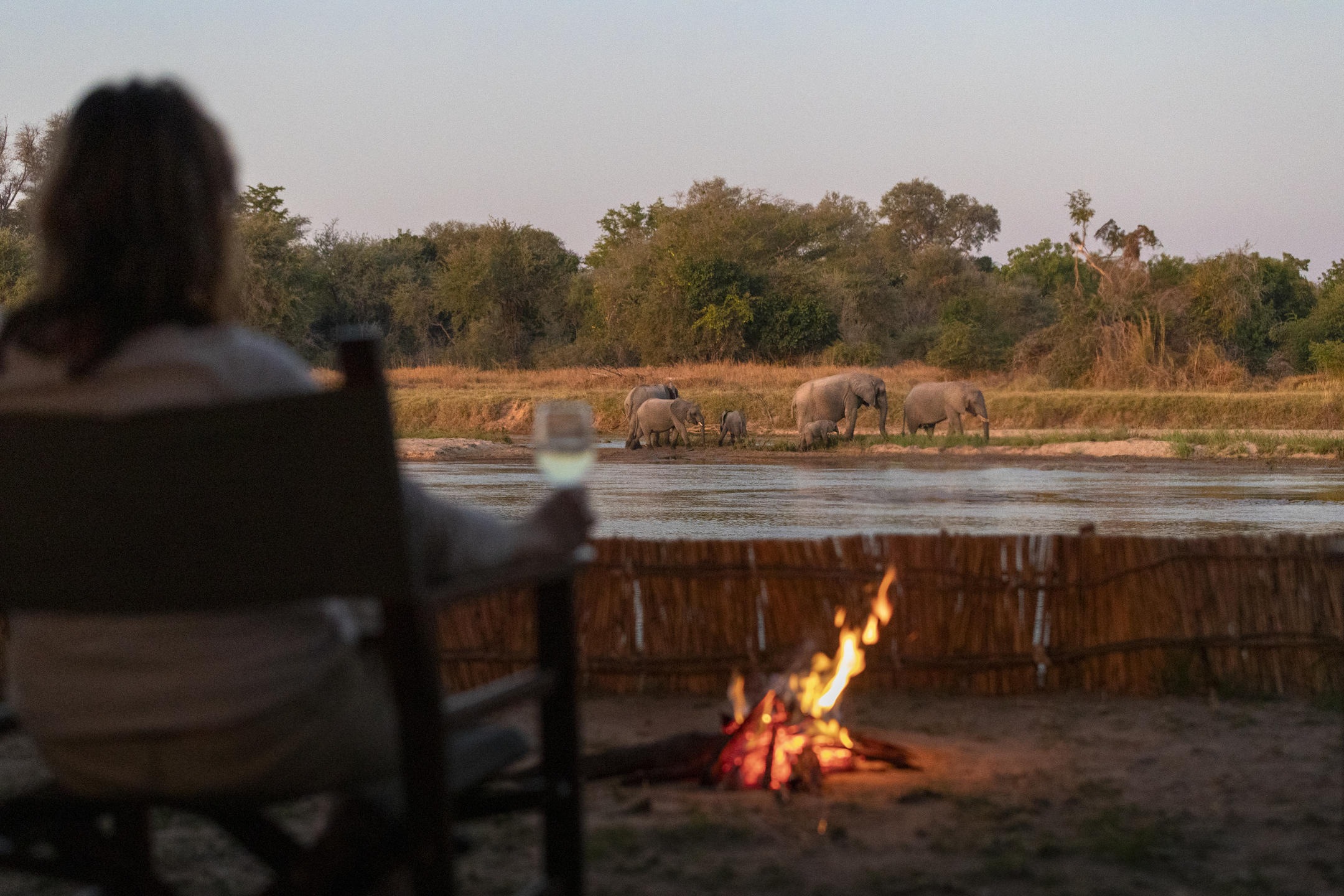
The next morning we crossed the river in canoes before setting off on foot into the park, while kudu and waterbuck gazed on passively. We followed the tracks of leopard, hyena, genet and aardvark, and made a tactical retreat when we found ourselves surrounded by elephants.
Our final evening was spent enjoying sundowners on the riverbank, overlooking a large pod of hippos rumbling and fighting over territory. As we headed back to civilisation the following day, crossing the river with our vehicle, we found a pair of lions resting on the cool sand in the shade of a mahogany tree. As we rounded the corner to leave the park, we came face to face with hundreds of buffalo – the perfect end to our safari.

